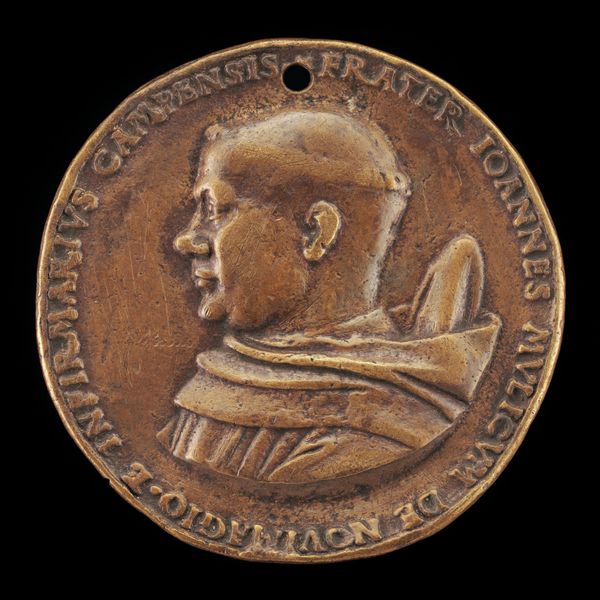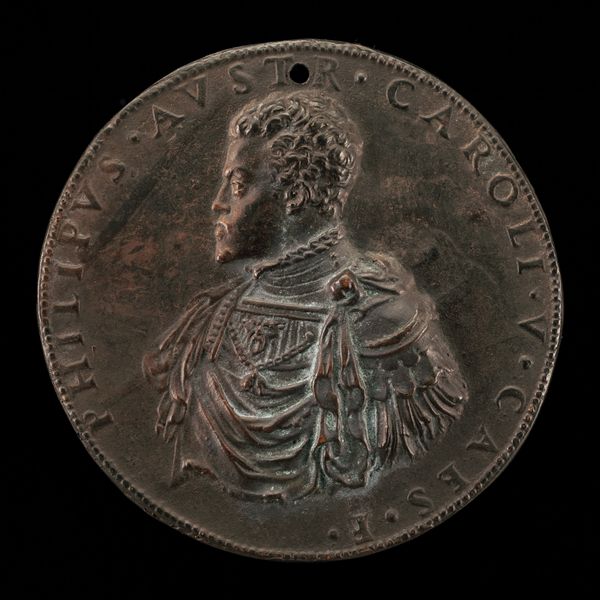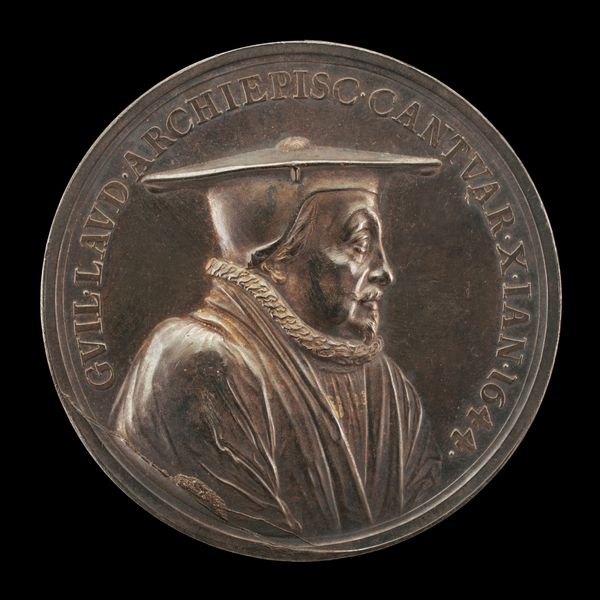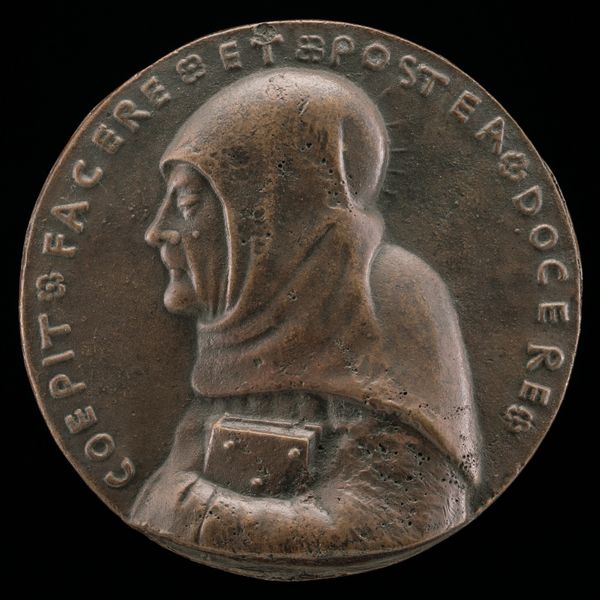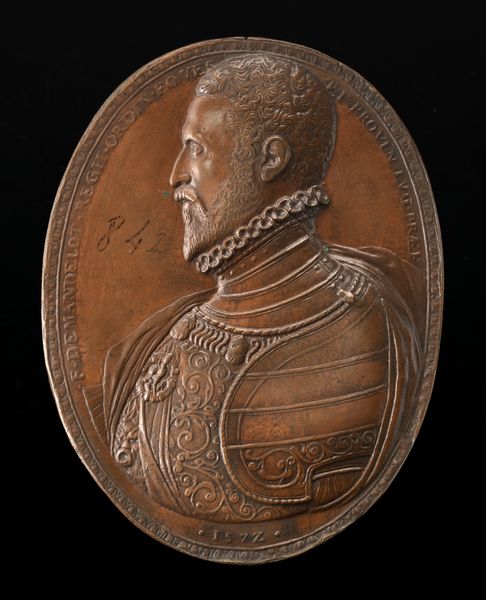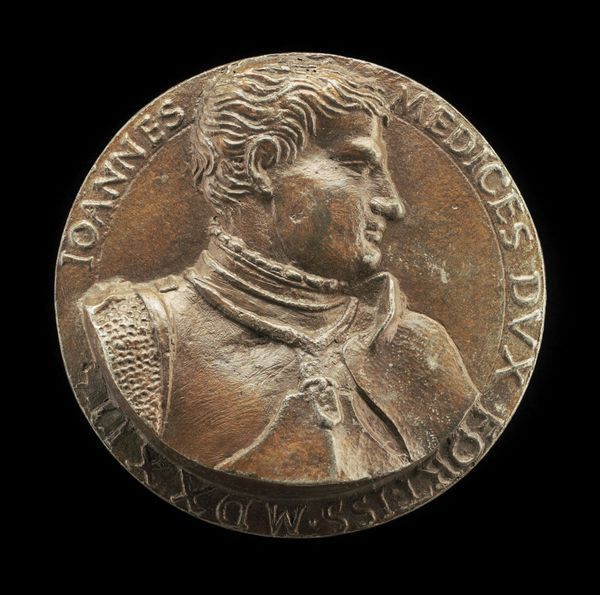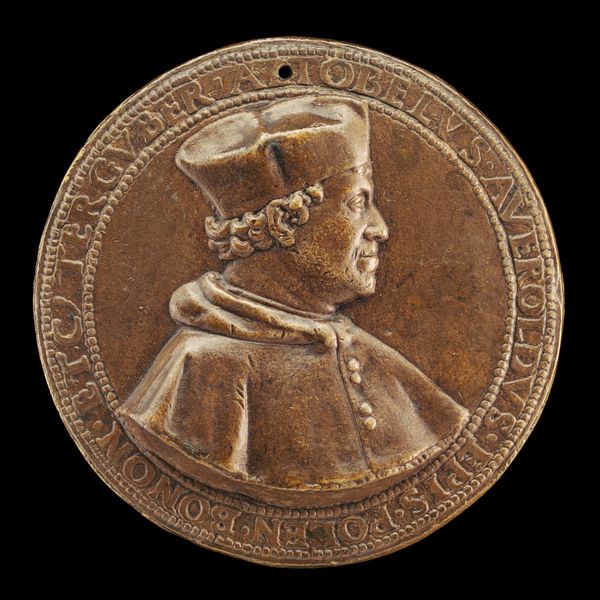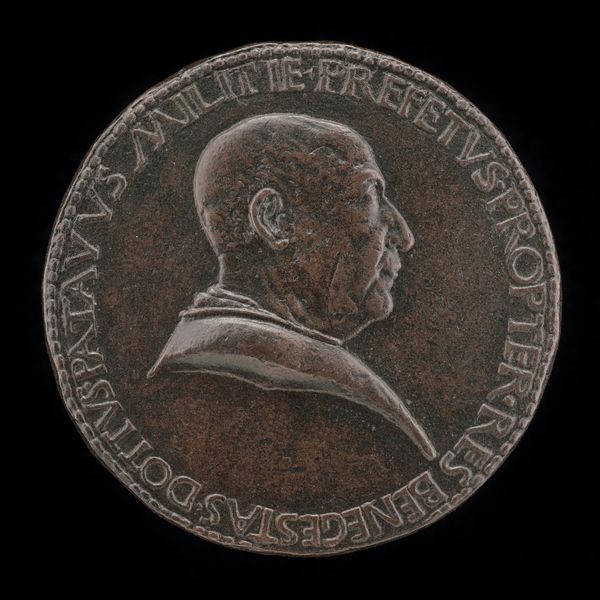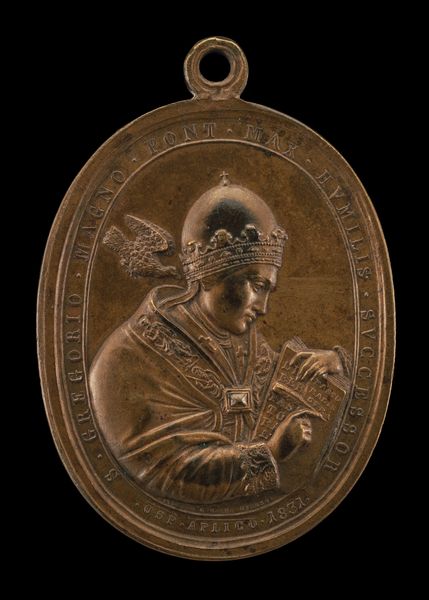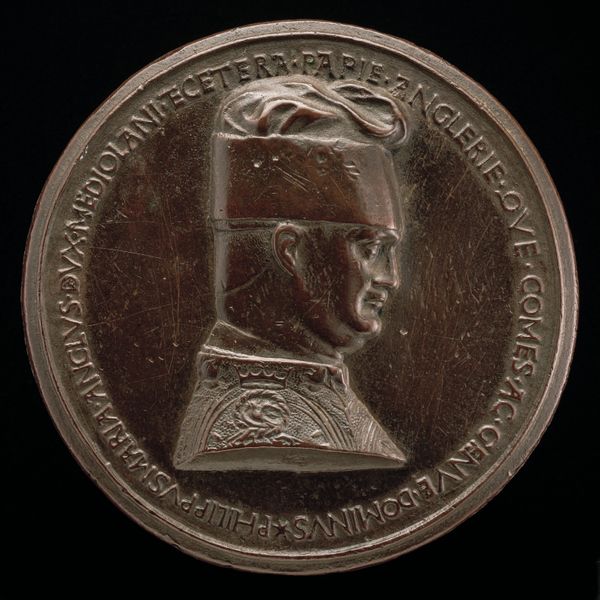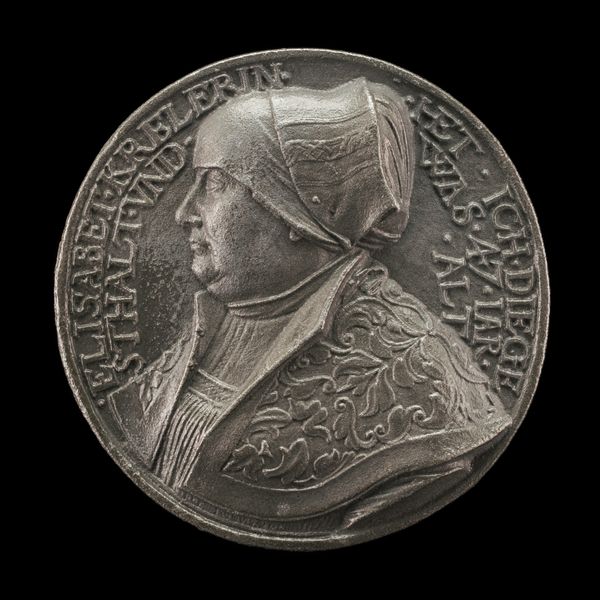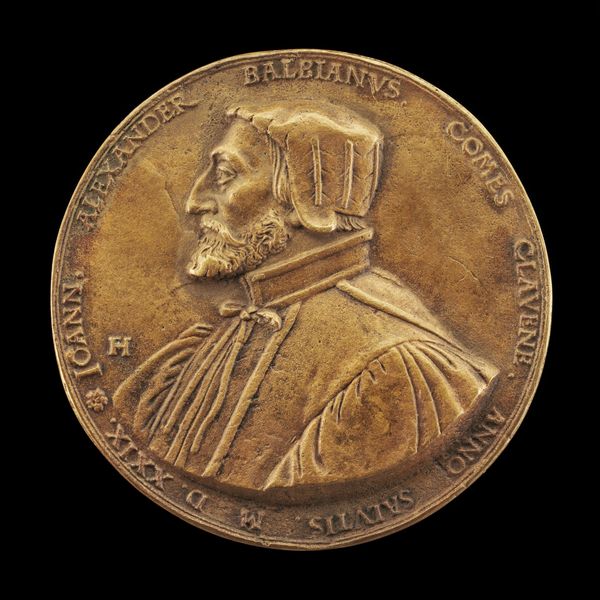![Giancarlo Rossetti, 1712-1793, Carmelite Preacher Padre Marco di San Francesco [obverse] by Antonio Francesco Selvi](/_next/image?url=https%3A%2F%2Fd2w8kbdekdi1gv.cloudfront.net%2FeyJidWNrZXQiOiAiYXJ0ZXJhLWltYWdlcy1idWNrZXQiLCAia2V5IjogImFydHdvcmtzLzQyOTc1YTljLTEwMjYtNDg4NC1hM2Y2LTIyMWQxYzU2OWI1Zi80Mjk3NWE5Yy0xMDI2LTQ4ODQtYTNmNi0yMjFkMWM1NjliNWZfZnVsbC5qcGciLCAiZWRpdHMiOiB7InJlc2l6ZSI6IHsid2lkdGgiOiAxOTIwLCAiaGVpZ2h0IjogMTkyMCwgImZpdCI6ICJpbnNpZGUifX19&w=3840&q=75)
Giancarlo Rossetti, 1712-1793, Carmelite Preacher Padre Marco di San Francesco [obverse] 1748
0:00
0:00
relief, bronze, sculpture
#
portrait
#
medal
#
baroque
#
sculpture
#
relief
#
bronze
#
sculpting
#
sculpture
Dimensions: overall (diameter): 8.66 cm (3 7/16 in.)
Copyright: National Gallery of Art: CC0 1.0
Curator: This bronze relief sculpture, created in 1748, commemorates the Carmelite preacher Padre Marco di San Francesco. Giancarlo Rossetti is credited with this side, or the obverse, of the medal. Editor: Immediately, I’m drawn to the way the bronze captures such a solemn, almost austere feeling. It's striking how a metal could convey such an intense inner life. Do you see how the light catches the sharp angle of his brow, while the soft folds of his habit seem almost…resigned? Curator: Precisely! Baroque portraiture, particularly in medal form, often aimed to immortalize individuals and also reflect their virtues and status. Padre Marco’s serious expression and Carmelite habit indicate his religious devotion, further emphasizing his importance in society and within the Church. Rossetti's talent lies in his capturing of psychological intensity in such a miniature scale. Editor: It really feels like more than just a visual depiction; there’s this underlying emotional narrative that plays out through the rendering. Even the inscription surrounding the figure – "R. MARCIUS A.S. FRANC. VENET. CARM. EXSC. ORAT. SAC. EXIM. RET." -- seems to box him in with titles, you know? He’s defined entirely by these weighty descriptors. I wonder if the "box" that all people in the 1700s inhabited felt at all crushing. Curator: Your sense is quite perceptive, as such descriptive, sometimes performative, identity certainly echoes this era’s complex social etiquettes. These objects also functioned as diplomatic tools or personal mementos, signifying honor and affiliation. The inscription provides a glimpse into the layers of religious identity and social status associated with Padre Marco. Note also how meticulously crafted is the typography - letterforms were considered critical aspects of the medal. Editor: I think understanding context is vital, or something essential is simply missing from one's consideration. Medals might seem commonplace, but they also give access to intensely human moments. What really stays with me is this contrast: hard bronze rendering such tenderness of the human spirit. I guess there's more than initially meets the eye, as usual. Curator: I agree completely. These symbols and cultural forms, however seemingly quotidian, allow us insights into the spiritual landscape of another epoch, revealing resonances that continue to affect our present-day moment.
Comments
No comments
Be the first to comment and join the conversation on the ultimate creative platform.
